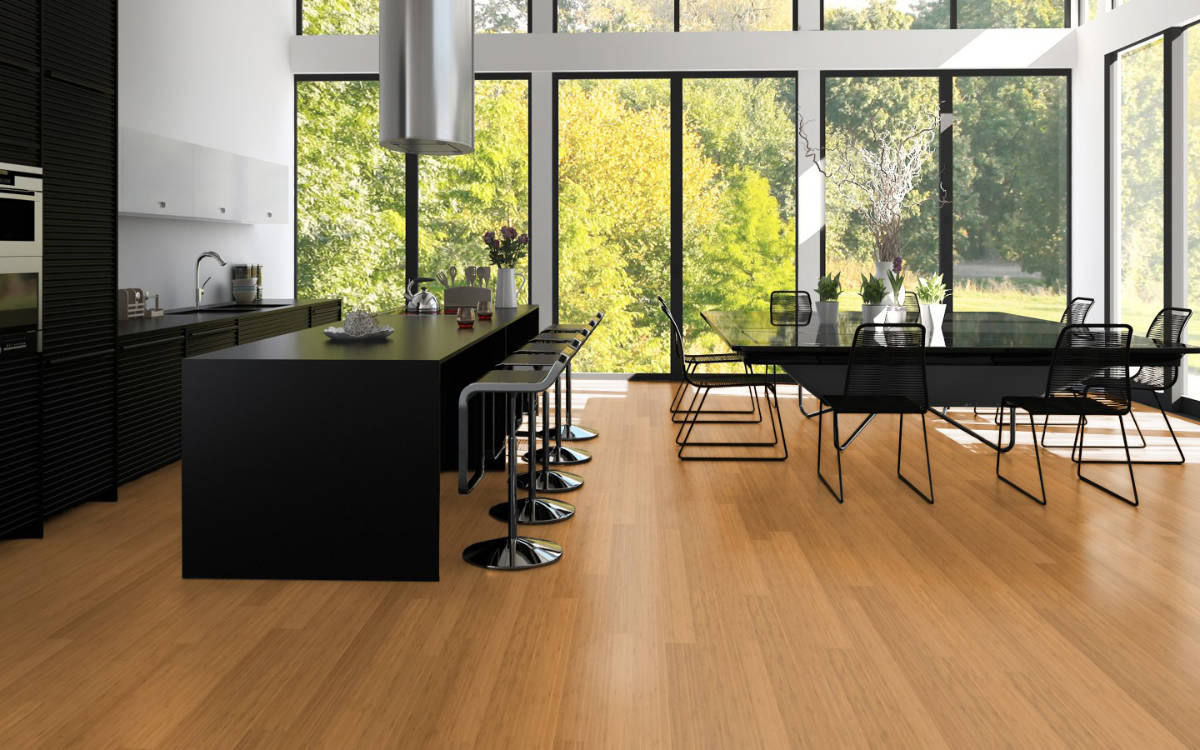Bamboo flooring has become increasingly popular in contemporary architecture, particularly among Japanese architects who appreciate its unique blend of sustainability, aesthetics, and functionality. As a bamboo flooring factory technologist, I have observed the growing trend of bamboo use in architectural designs, especially those influenced by traditional Japanese design principles. This blog explores what Japanese architects love about Chinese bamboo floors and why they are integrating this material into their projects.
Aesthetic Harmony
Japanese architecture has long been characterized by its emphasis on harmony with nature. This principle resonates deeply with the qualities of bamboo flooring. Chinese bamboo, with its natural grain patterns and warm tones, offers a versatile aesthetic that complements various design styles. Whether in traditional settings or modern minimalist designs, bamboo creates an inviting atmosphere that aligns with the Zen principles central to Japanese culture.
The ability to finish bamboo in different colors and textures allows architects to customize its appearance to fit specific design intentions. From light, natural finishes that enhance the bamboo’s inherent beauty to darker stains that lend a contemporary edge, the adaptability of bamboo flooring makes it a favorite among architects seeking to create unique spaces.
Sustainability and Environmental Impact
One of the most significant factors driving the preference for bamboo among Japanese architects is its sustainability. Bamboo is a fast-growing grass that can be harvested every three to five years, making it a highly renewable resource. This rapid growth cycle is in stark contrast to traditional hardwoods, which can take decades to mature.
In Japan, where environmental consciousness is deeply ingrained in cultural values, the use of sustainable materials is paramount. Chinese bamboo flooring aligns perfectly with this ethos, allowing architects to design spaces that are not only beautiful but also environmentally responsible. By choosing bamboo, architects contribute to reducing deforestation and promoting a more sustainable approach to construction.
Durability and Strength
Durability is a critical concern in architectural design, particularly in high-traffic areas. Moso bamboo, a popular species used in flooring, is known for its exceptional strength and resilience. When processed correctly, bamboo flooring can be as hard as or even harder than many hardwoods, making it suitable for various applications, from residential homes to commercial spaces.
Japanese architects appreciate this durability, as it allows for the creation of long-lasting spaces that can withstand the rigors of everyday use. The strand-woven bamboo, in particular, is engineered for maximum density, making it an ideal choice for flooring in busy environments.
Health Benefits
Indoor air quality is a growing concern in modern architecture, and Japanese architects are increasingly focused on creating healthier living environments. Bamboo has natural antimicrobial properties, which can inhibit the growth of bacteria and mold. This quality is especially beneficial in homes and public buildings where hygiene is a priority.
Moreover, many bamboo flooring products are manufactured with low-VOC (volatile organic compounds) finishes, ensuring a healthier indoor atmosphere. This focus on health and well-being aligns with the Japanese design philosophy, which emphasizes creating spaces that promote physical and mental wellness.
Versatility in Design
Chinese bamboo flooring offers remarkable versatility, making it suitable for various design applications. From residential homes to commercial buildings, bamboo can adapt to different environments while maintaining its aesthetic appeal. Architects can use bamboo flooring in diverse settings, including living rooms, offices, and even restaurants, to create cohesive and functional spaces.
This adaptability extends to the selection of bamboo flooring styles. Architects can choose from various formats, including engineered bamboo, solid bamboo, and strand-woven options, allowing them to tailor the flooring to the specific needs of their projects. Whether aiming for a rustic look or a sleek, modern finish, bamboo flooring can meet these varied design objectives.
Cultural Significance
For many Japanese architects, the appreciation of bamboo goes beyond its physical properties; it also holds cultural significance. Bamboo has been an integral part of Japanese culture for centuries, symbolizing resilience, flexibility, and purity. Its use in architecture and design reflects a deep respect for traditional values and a connection to nature.
By incorporating Chinese bamboo flooring into their projects, architects embrace this cultural heritage while also exploring modern interpretations. This blending of tradition and innovation is a hallmark of contemporary Japanese architecture, allowing for the creation of spaces that resonate with both history and modernity.
Cost-Effectiveness
While bamboo flooring can be comparable in price to some hardwood options, it often provides a more cost-effective solution in the long run. The durability and low maintenance requirements associated with bamboo flooring make it an attractive option for architects working within budget constraints.
The initial investment in bamboo flooring can yield significant savings over time, as its longevity reduces the need for frequent replacements or repairs. This financial practicality appeals to architects and clients alike, making bamboo a smart choice for various projects.
Conclusion
Japanese architects are increasingly drawn to Chinese bamboo flooring for its harmonious blend of sustainability, durability, and aesthetic appeal. The material not only aligns with traditional Japanese design principles but also addresses modern concerns regarding health and environmental impact. By incorporating bamboo into their projects, architects create spaces that are beautiful, functional, and deeply connected to nature.
As the architectural landscape continues to evolve, bamboo flooring stands out as a sustainable and versatile option that meets the demands of contemporary design while honoring cultural heritage. The growing appreciation for this remarkable material reflects a broader shift towards eco-friendly practices and a renewed focus on the connections between architecture, nature, and human well-being.
